8 Reasons Your Apple Tree Isn’t Fruiting According To A Permaculture Gardener


Elizabeth is a Permaculture Garden Designer, Sustainability Consultant and Professional Writer, working as an advocate for positive change. She graduated from the University of St. Andrews with an MA in English and Philosophy and obtained a Diploma in Applied Permaculture Design from the Permaculture Association.
Reviewed By COLIN SKELLY

Colin is a Horticulturist and Horticultural Consultant with experience in a range of practical and managerial roles across heritage, commercial and public horticulture. He holds the Royal Horticultural Society’s Master of Horticulture award and has a particular interest in horticultural ecology and naturalistic planting for habitat and climate resilience.
IN THIS GUIDE
Apple trees are arguably the easiest fruit tree to grow in the UK.
They are relatively low maintenance and tend to require little ongoing care once established.
However, as always in a garden, there are things that can go wrong, with problems that are within our control, and some that are not.
If an apple tree fails to fruit, there are a number of potential causes, including:
- Too young to fruit.
- Damage to blossoms due to cold weather.
- Bird or insect damage.
- Lack of pollination partners.
- Poor weather.
- Biennial cropping.
- The tree was pruned incorrectly.
- Environmental problems or unsuitable growing conditions.
In my forest garden where I have 6 apple trees growing, I have only encountered the second of these issues once on one of my trees.
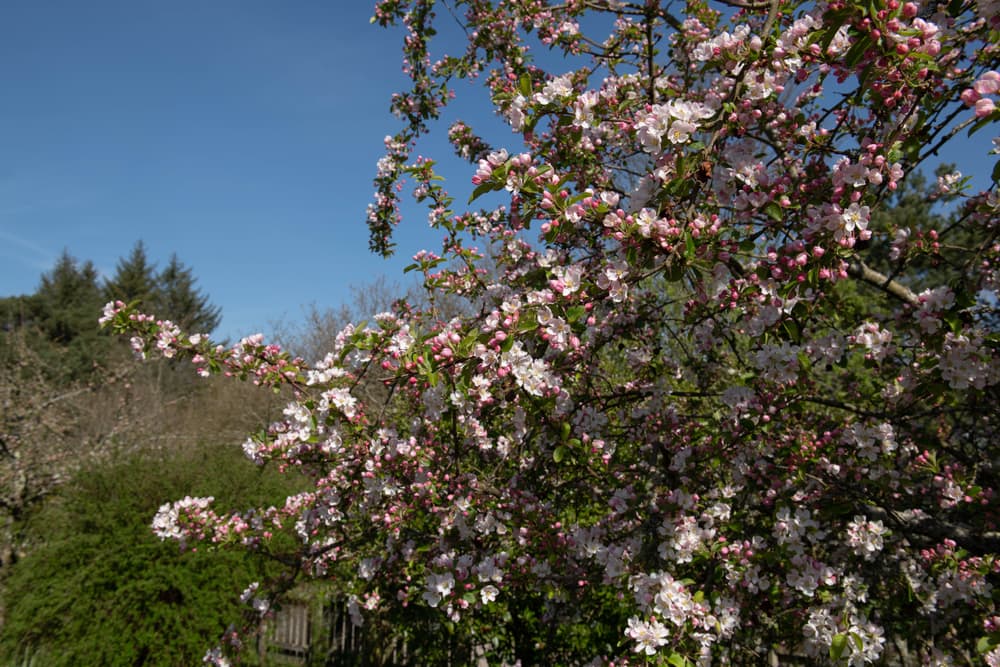
One year, we had a sudden cold spell in spring with hard frost that damaged the blossoms and meant a year of non-fruiting.
In that particular instance, the reason for non-fruiting was very clear, but the cause of an apple tree failing to fruit is not always quite as easy to discern.
We’ll take a look at each of the reasons listed above, to help you work out what might be the problem with a non-productive tree.
1) Immature Tree
The first thing to consider if an apple tree has not fruited is that it may simply still be too young to do so.
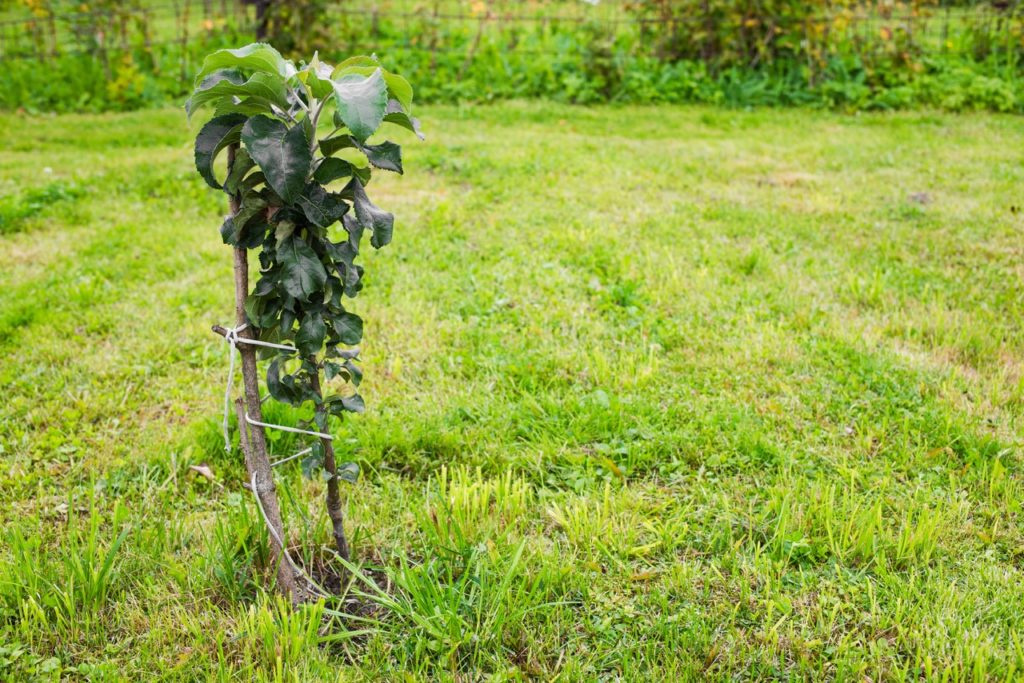
It will typically take a few years before apple trees begin fruiting, though precisely how long this takes will depend on the variety and rootstock chosen, as well as a range of other factors.
If a young apple tree is not fruiting, you may simply have to wait a little longer until it is mature enough to do so.
2) Extreme Cold
As mentioned above, this is the only issue I have encountered in my own forest garden.
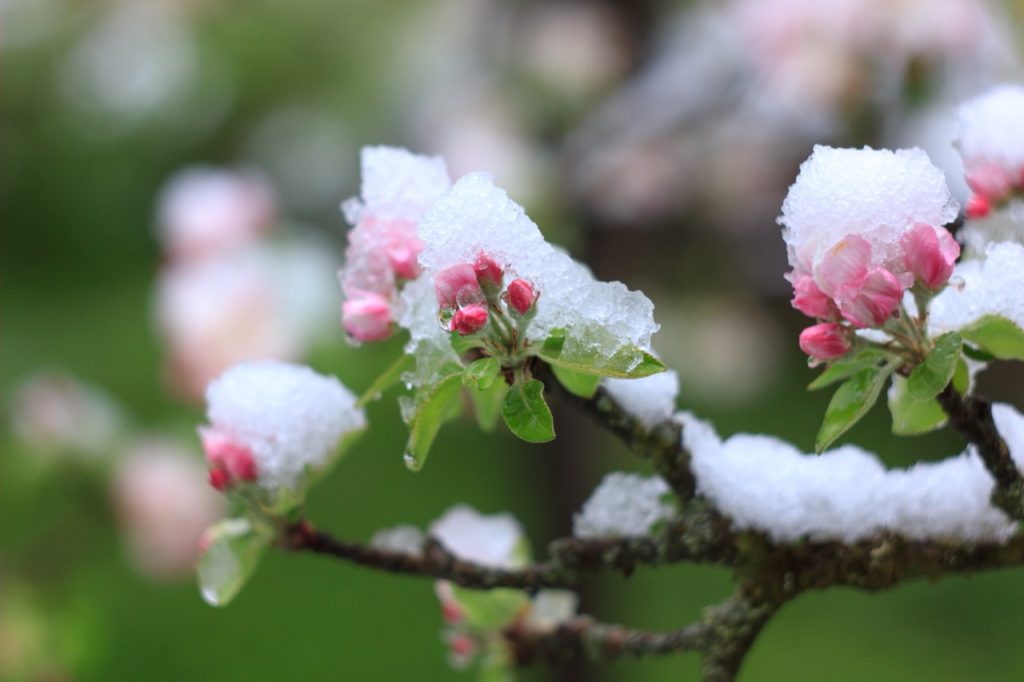
A sudden and unexpected late cold snap in the spring can damage the blossoms and prevent them from being pollinated and setting fruit.
Unfortunately, if you are not forewarned, then there is little you can do to prevent this.
However, if you get a forecast, you might be able to protect the blossoms by covering them.
Damage to blossoms by the cold is more common with earlier flowering fruit trees, but it can occasionally occur in some areas with apple trees too.
3) Bird Or Insect Damage
Blossoms on an apple tree can also potentially be damaged by birds or insects early in their growth, sometimes while in the bud before the flowers even open.
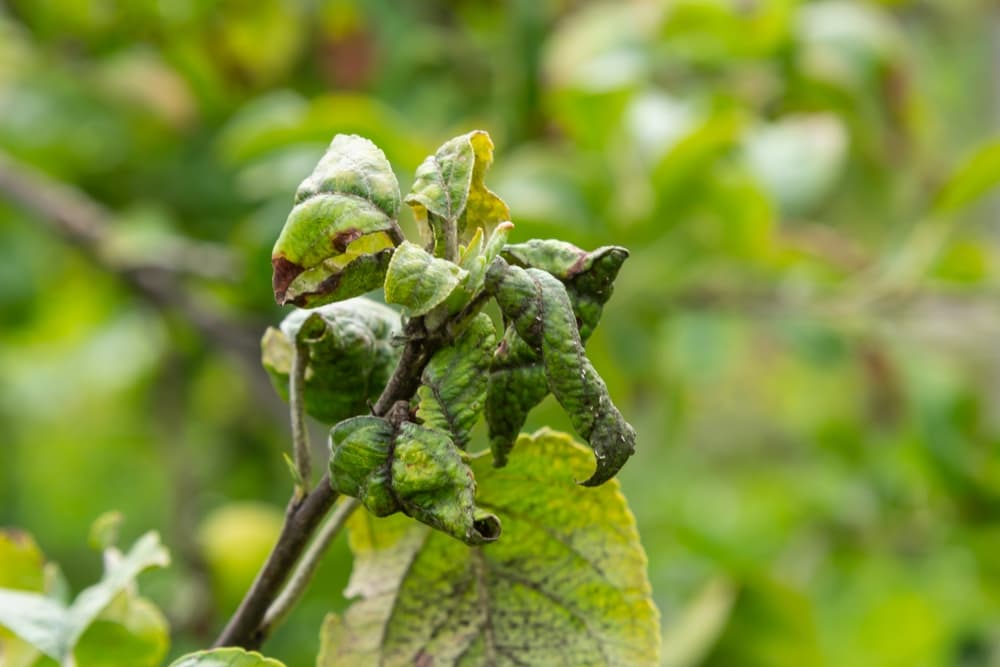
One way to forestall this issue is to make sure that there are plenty of food sources (natural and at feeders) for the birds in your garden in late winter and early spring, as birds will only tend to go for buds when there are no other food sources available.
4) A Lack Of Pollination Partners
Even when blossoms form as they should, issues with pollination can also lead to the non-fruiting of an apple tree.
Pollination is a very important thing to consider when choosing an apple tree for your garden.
Some apple trees are self-fertile and will fruit even without another apple tree close by, but many apple trees will only fruit with another apple tree in the right pollination group close by.
A few need more than one other apple tree to fruit well.
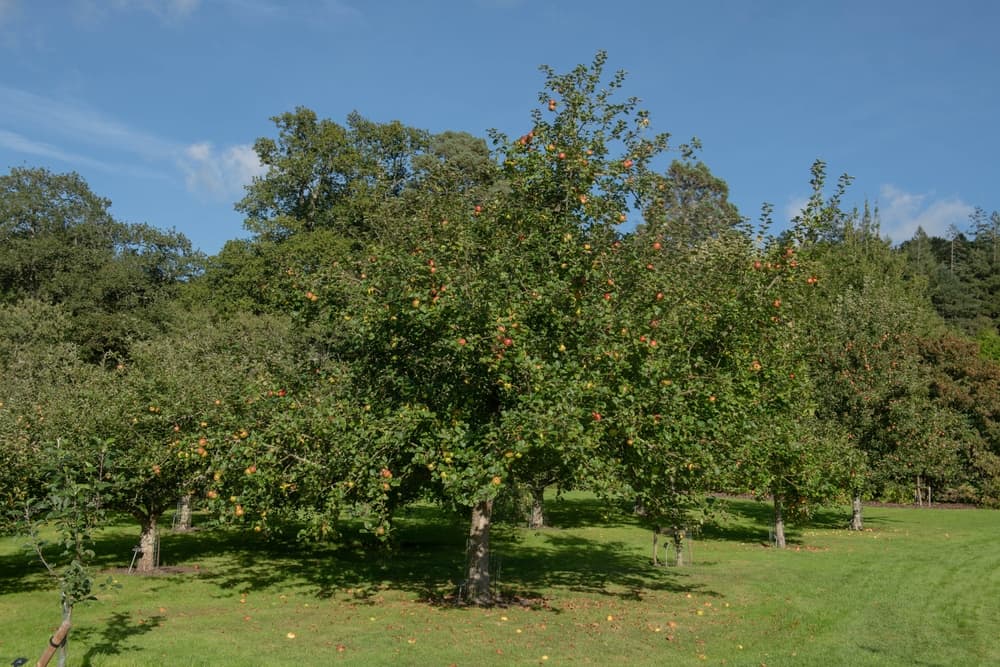
If you have planted an apple tree that is not self-fertile on its own, you may need to place another apple tree in your garden before fruits will form successfully.
“Apple trees often need a tree from the same or adjacent pollinating group to ensure they are in flower at the same time or overlap,” explains Master Horticulturist Colin Skelly.
“I have had an issue with a triploid cultivar ‘Blenheim Orange’, which is in pollination group 3.
“I have one other apple from group 2 but this has not been sufficient to pollinate the triploid cultivar, which often needs 2 other cultivars in order to be pollinated and set fruit.
“I have added 2 new cultivars in groups 3 and 4 this year, so hopefully I’ll be enjoying a crop this year!”
5) A Lack Of Insect Pollinators
Another issue that can lead to poor or non-existent pollination is a paucity of insect pollinators in your garden during the blossoming period.
It is vitally important to attract pollinators to your garden to obtain the best yields.
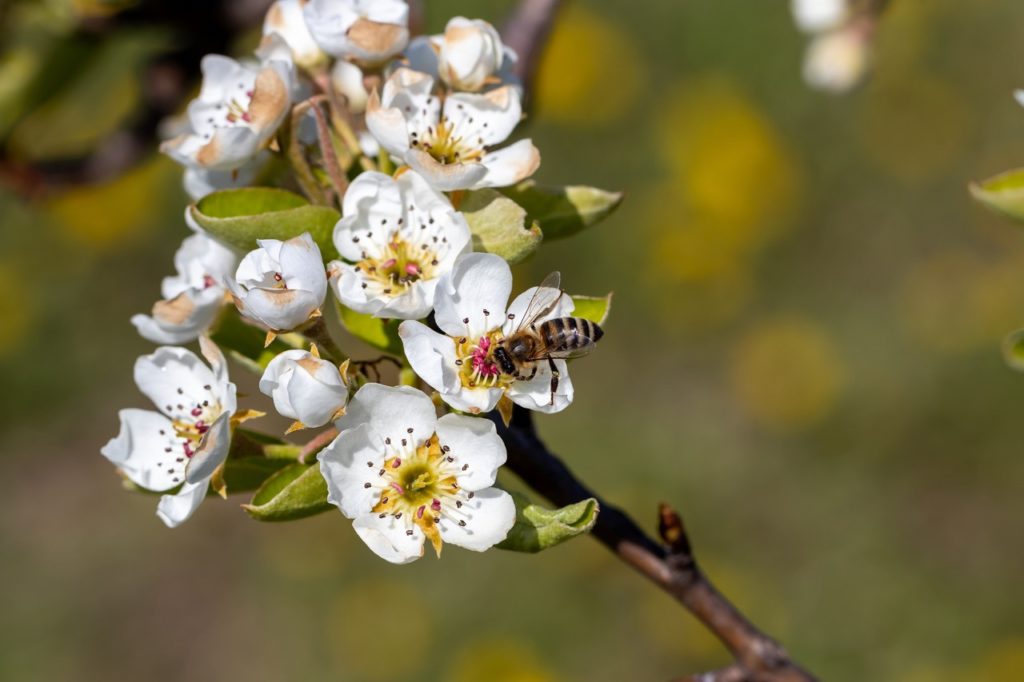
You can help by providing pollinators with nectar during the period immediately prior to the time when your apple tree blooms.
However, poor weather during the pollination period can restrict pollinator activity and lead to a poor harvest – or even no harvest at all.
Placing an apple tree in a suitably protected and sheltered spot can ensure pollinators can do their work even when the weather is wild.
6) Biennial Cropping
Biennial bearing is a problem that can arise with apple trees which means that they can produce abundant fruit one year and little to none the next.
Some varieties are more likely to have this problem than others.
If apple trees do not fruit for one year, they have resources that go into producing a large number of blossoms the following year.

Then, the abundant yield reduces the vigour of the tree and leads to lower amounts of blossom and fruit the following year.
If you do nothing to redress this problem, this pattern can continue over multiple years.
When I had a non-bearing year due to spring frost on one of my apple trees, I was able to prevent overly abundant cropping by rubbing off fruit buds the following year in early spring.
This brought the tree back into regular production.
7) Incorrect Pruning
Pruning incorrectly or failing to prune an apple tree can also lead to a lack of fruit production.
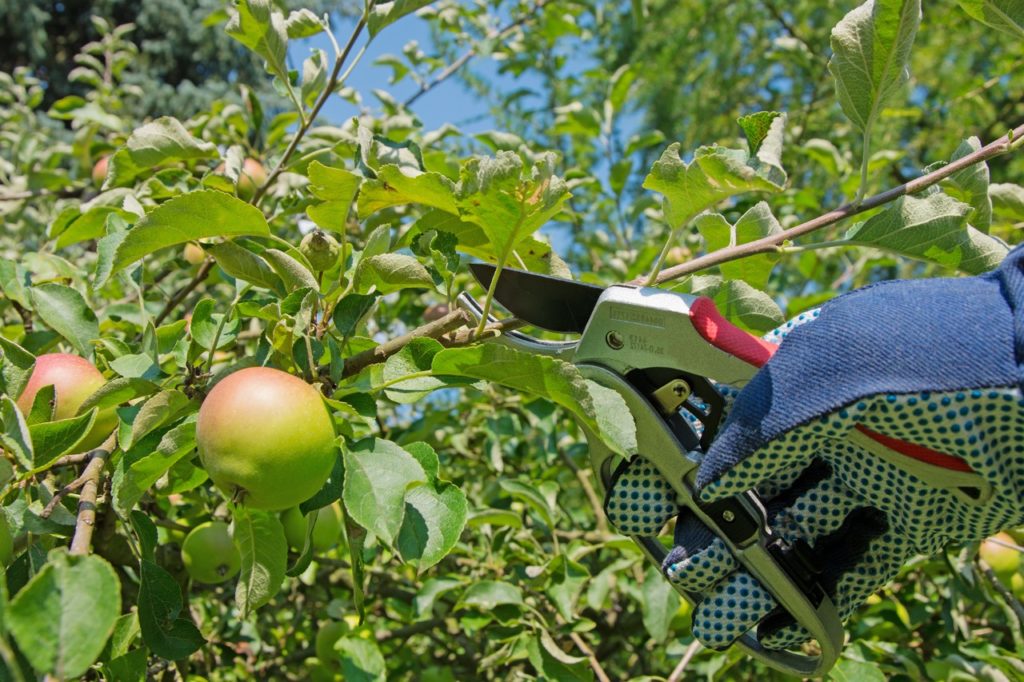
It is important to make sure that you understand regular maintenance pruning and any other specific pruning required for the form and variety of apple trees you have chosen.1Apples and pears: winter pruning. (n.d.). Royal Horticultural Society. Retrieved April 11, 2023, from https://www.rhs.org.uk/fruit/apples/winter-pruning
Renovation pruning can be carried out on neglected apple trees and this can often bring them back into full and healthy production.2Apples and pears: renovation pruning. (n.d.). Royal Horticultural Society. Retrieved April 11, 2023, from https://www.rhs.org.uk/fruit/apples/renovating-old-trees
8) Environmental Issues
Remember, in order to fruit, an apple tree requires sunlight, water and nutrients in sufficient quantities.
A lack of light, drought in spring or early summer and poor, infertile soil can all lead to a lack of fruiting.
So, it is important to look at environmental conditions and fertility to make sure an apple tree fruits well over the years.
References
- 1Apples and pears: winter pruning. (n.d.). Royal Horticultural Society. Retrieved April 11, 2023, from https://www.rhs.org.uk/fruit/apples/winter-pruning
- 2Apples and pears: renovation pruning. (n.d.). Royal Horticultural Society. Retrieved April 11, 2023, from https://www.rhs.org.uk/fruit/apples/renovating-old-trees
